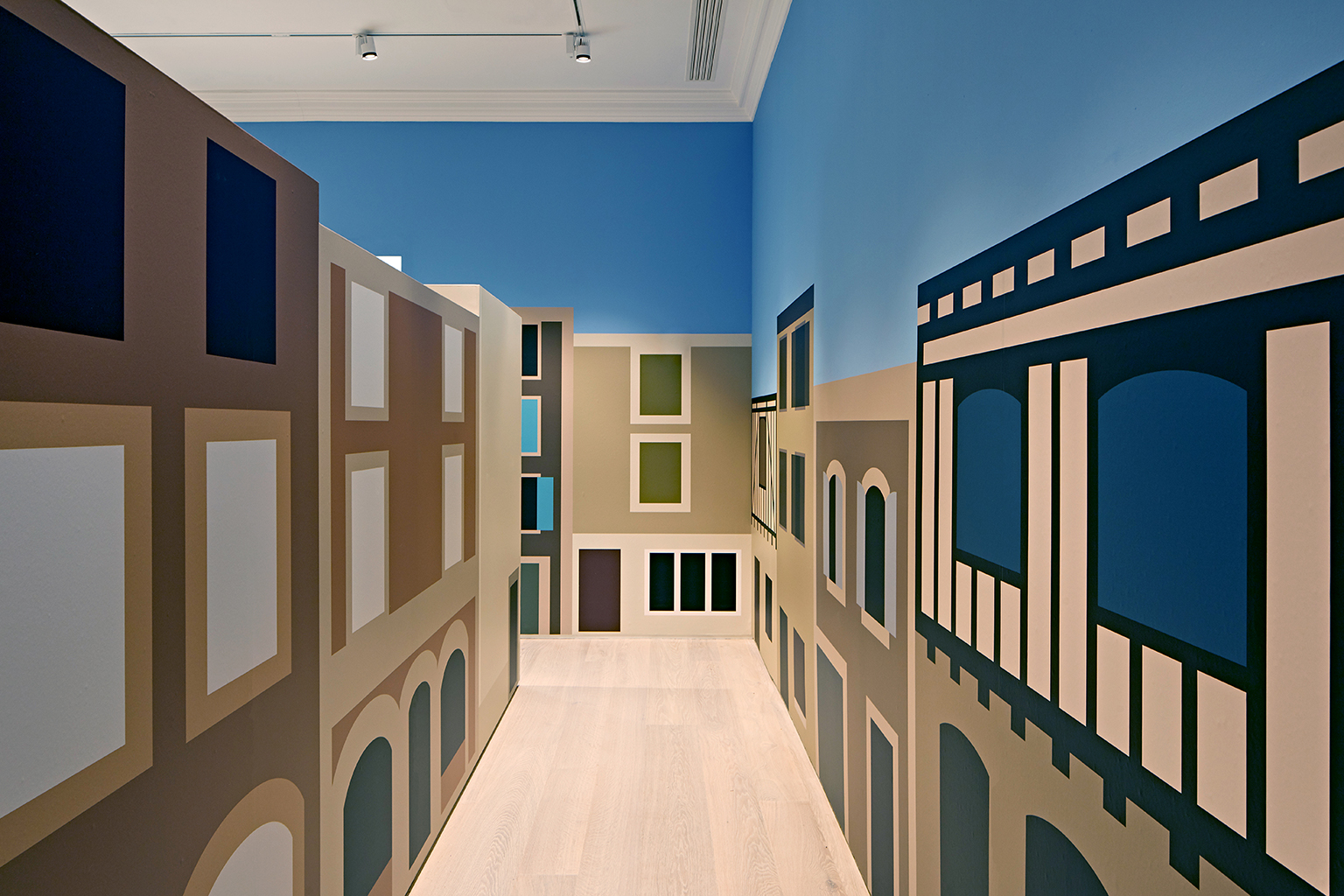Julian Opie on making art from vast amounts of visual information

With an Art Fund-supported exhibition of his work at London’s Pitzhanger Manor & Gallery, Julian Opie discusses how he uses contemporary materials and a distinctive linear visual language to reveal how we navigate the world.
Who is Julian Opie?
Julian Opie (b1958) creates work in a distinctive linear visual language, using a wide variety of mediums and materials, including sculpture, animation, paintings, LED display screens, light boxes and laser-cut aluminium, to represent aspects of the world he sees around him, from animals and people to natural landscapes and architecture. His current solo exhibition, at Pitzhanger Manor & Gallery, is supported by a Respond and Reimagine grant from Art Fund.

Q. How do you use visual language and materials to reflect how we navigate the modern world?
I design by observation. I see things in the world that seem to do something extraordinary. There are certain places where the world addresses you very directly: shopping malls, airports, motorways. In the past, these would have been cathedrals, churches and temples – public spaces where visual language is very present. I’m really aware, when I’m looking around, of how imagery is put across, and I see that as a palette of possibilities. Although it can be challenging to use contemporary materials – such as LEDs and plastics, or aluminium painted with car paint – they have qualities that are visually exciting but also relate very closely to what you see out on the street, so they’re part of our vernacular.
Vast amounts of information are processed through the eyes and brain, and becoming aware of that process is central to my interest in terms of making art
When I’m in the studio, at home with my family or watching TV, I don’t really notice things – I just use the world as a backdrop to whatever I need to get done. When I’m travelling, waiting or moving through the town, however, I feel much more engaged with my surroundings. It’s as if, at that point, I actually see things, and I begin to see beyond simply navigating and reading and realise I’m in a picture.
Vast amounts of information are processed through the eyes and brain, and becoming aware of that process is very central to my interest in terms of making art. Really, it’s irrelevant what the subject matter is. If I draw a dog, it could be a cat. Or if I draw a cat, it could be a person. What matters is the use of that imagery, and the way I play it out. If a juggler is juggling chainsaws, it’s cool, it’s dangerous, and it’s exciting, but he could equally be juggling balls or batons. It’s the process of juggling that’s extraordinary and worth looking at.

Making a drawing is a way of putting the information you’re receiving from the world through yourself – your eyes, your brain, your hand – and back out again, almost as if there’s the sun, there’s you and there’s a shadow. It feels like a very natural process to play something back into the world it came from.
In terms of materials, I sometimes use the analogy of cooking. Cooking is a process and each element is important. There’s the heat, the ingredients and the tools. Of course, it’s also about the eating – or, in my case, the exhibiting and communicating of the work. Everything would be fairly useless if you just stuck it back in the fridge. I play with materials and try to find the perfect answer. I never really know where I’m going to end up, or what I’m making, or even the reason I’m making it, but I don’t think it works that way. Both science and cooking work through experimentation and seeing what the results are – not knowing what the results are in advance and making the experiment fit.
I have always felt that making an exhibition is very much part of the work. When you step into a museum full of art, it has a certain impact. People expect to walk into a gallery and see a series of rectangles with gold frames and faces looking out at them. I try to pick up on that in this exhibition. There are some three-dimensional cityscapes exhibited as if they were very large paintings – they’re actually light boxes – but they relate to canvases. As you walk in, they create a cinematic backdrop to the statues that are on the floor.
Another device I have used here is to turn the whole room into a landscape, so, as you navigate through the space, you come across different works, and you move through it as if it were a story or a narrative, a film or a novel. Although there’s a common theme in terms of the look of things – drawing – there’s quite a lot of different material: there are animals, buildings and people. And there are different technologies. It’s a varied experience, and the process of walking through the exhibition becomes a process of reading. It’s a bit like a walk-through computer game or a landscape. Part of my reason for doing it this way was because Pitzhanger Manor – a manor house referencing Greek temples in the middle of a large park – is in the middle of Ealing, which is very urban, very busy, so it already feels as if you are out of normal time and space.


Interview by Anna McNay.
A version of this article first appeared in the autumn 2021 issue of Art Quarterly, the magazine of Art Fund.
‘Julian Opie’ is on at Pitzhanger Manor & Gallery, London, until 24 October. 50% off with National Art Pass.
The more you see, the more we do.
The National Art Pass lets you enjoy free entry to hundreds of museums, galleries and historic places across the UK, while raising money to support them.